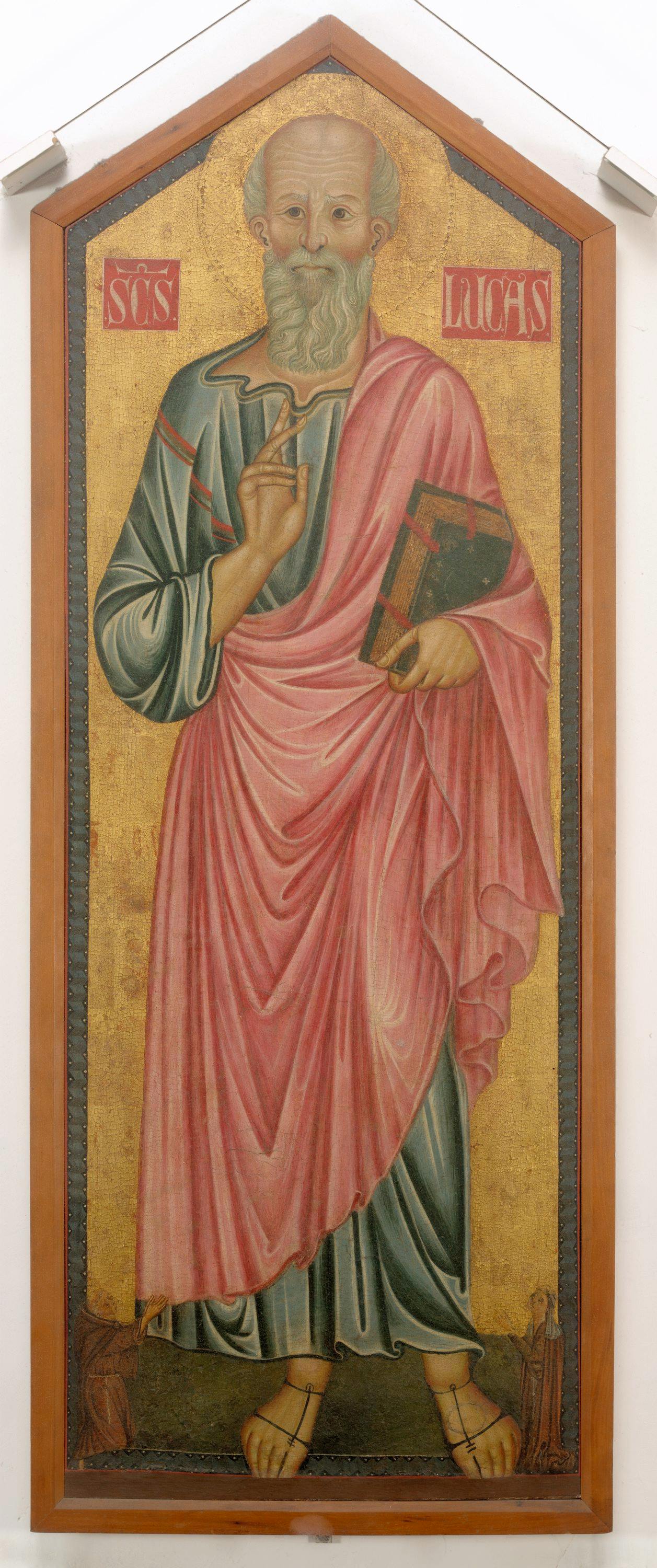St Luke
Master of the Maddalena (Florence, 1250-1300 circa)
S(AN)C(TU)S LUCAS
The evangelist Luke is identified by the inscription painted on the sides of his halo. The saint is holding a book, perhaps a reference to his own Gospel, and he is issuing a blessing in the name of Christ with his right hand. Depicted as an elderly man, with grey hair and beard, he has a bald forehead, a characteristic attributed to men of wisdom. He is wearing a pink pallium over his tunic, which is decorated on one shoulder with narrow red stripes, known as angusticlavi, a mark of distinction found in the clothing of the Roman and Byzantine ages. Although he is depicted facing the front, the saint is looking to the left, an attitude that could be connected with the original location of the painting, for example, the side altar of a church. The work comes from the Santissima Annunziata Monastery in Florence, of the Servants of Mary, but there is some uncertainty about whether this was its original destination, fuelled by the two small praying devotees at the bottom, a monk and a nun, wearing the robes of the Franciscan order.
The painting is attributed to the same artist who painted the panel Mary Magdalene with Eight Scenes from her Life in the Galleria dell’Accademia in Florence, the work from which he took his name. He was one of the most prolific Florentine painters of the late 13th century, a lively narrator of events. The panel in the Uffizi, characterised by its slender shape with triangular end piece at the top, was one of the painter’s later works, influenced by the painting of Cimabue.
